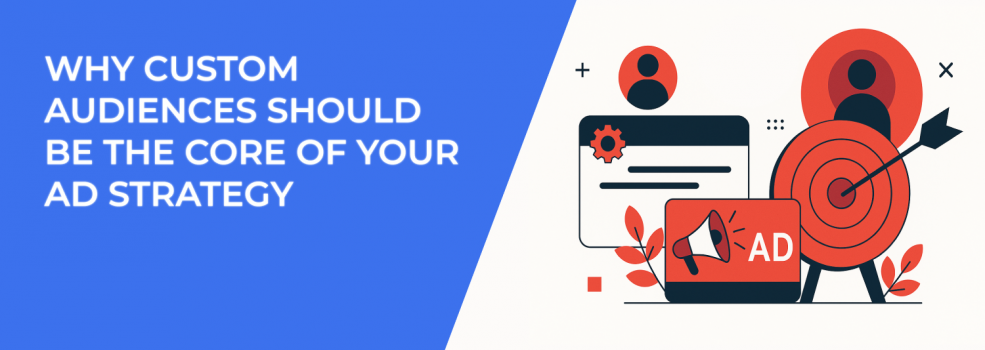Advertising on Facebook or Instagram can be costly, and too much budget often goes toward cold audiences with little awareness of your brand.
Custom audiences offer a smarter alternative by focusing on people who have already engaged — website visitors, past customers, or followers. This approach reduces costs, improves performance, and delivers measurable results.
Why Custom Audiences Should Be the Core of Your Ad Strategy
Many campaigns waste budget on cold audiences — people who don’t know your brand and are harder to convert. Custom audiences solve this by focusing on those who already interacted with your business, such as visitors, followers, or past buyers.
The benefits are clear:
-
Lower costs per conversion — it’s cheaper to convert people who already know you.
-
More accurate targeting — you’re reaching proven prospects, not guessing.
-
More relevant ads — messages feel timely instead of intrusive.
-
Higher engagement — familiar audiences are more likely to click, watch, or share.
-
Stronger conversion rates — warm prospects move through the funnel faster.
That’s why the most effective advertisers start with custom audiences, then expand into lookalikes and broader groups for scalable growth.
How to Use Custom Audiences the Right Way
Custom audiences can drive excellent results, but only if you manage them carefully. Here are the key practices:
1. Set exclusions
Avoid showing ads to people who already converted. Exclude recent buyers or trial users, and move them into upsell or cross-sell campaigns to prevent wasted spend and ad fatigue.
2. Control overlap
When audiences share too many users, your ads compete with each other, raising costs. Use Facebook’s overlap tool and, if needed, merge, refine, or exclude audiences.
3. Segment by value
Not all customers are equal. Reward high-value buyers, nurture one-time customers, and build trust with new prospects. This maximizes lifetime value instead of chasing single sales.
4. Keep data fresh
Old lists stop performing. Regularly update your CRM, refresh email lists, and adjust retargeting windows — shorter for high intent, longer for reach.
5. Test different timeframes
Different timeframes suit different models: e-commerce often converts best with 3–7 days, while B2B may require 30–90 days. Test to find the right balance.
6. Align creative with audience stage
Match ads to funnel position: reminders for cart abandoners, introductions for new subscribers, rewards or upsells for repeat customers.
Advanced Custom Audiences
Basic custom audiences help you retarget people who already interacted with your brand. Advanced custom audiences take it further by combining actions, adding new sources, and narrowing in on those most likely to convert.
Here are some of them:
1. Combination audiences
Instead of targeting everyone who visited your website, you can focus on people who visited more than twice in the past two weeks and also follow your Instagram page. These users aren’t casual browsers — they’re highly engaged, connected with your brand across channels, and far more likely to convert.
This is ideal for conversion-focused campaigns. Use this type of custom audience when you want to push high-intent users to buy, sign up, or request a demo.
2. Refined and exclusion-based audiences
These audiences target people who showed interest but haven’t bought yet, while leaving out those who already did. For example, you can retarget someone who watched a video and visited your site but didn’t purchase. This way, your budget goes to people who still need a push.
They work well for follow-ups, like cart abandoners in e-commerce or B2B leads who downloaded a guide but never booked a demo. By refining and excluding, you focus on the right prospects and avoid wasting money on people who don’t need to see the same ad again.
3. Audiences from group and page followers
This type goes beyond website visitors — it’s about reaching people who actively follow or join communities around your brand. With LeadEnforce, you can build these audiences for your Facebook or Instagram ads — something you can’t do with Ads Manager alone.
Two key user groups you can add to your custom audiences:
-
Facebook group members — people who joined groups related to your brand or niche (including groups of your competitors).
-
Page followers on Facebook or Instagram — people who chose to follow popular pages in your niche, your own page, or pages of your competitors.
This type of custom audiences is perfect for promoting new products, loyalty offers, or inviting people to events and webinars.

